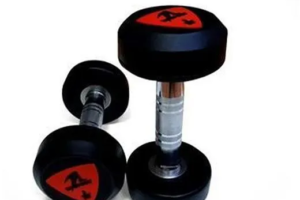Why Building Cleaning Cradles are Essential for Modern Urban Maintenance
Introduction
In the dynamic and ever-evolving landscape of modern cities, maintaining the towering facades of high-rise buildings is a formidable challenge. Urban maintenance has become more critical as our skylines reach new heights, and one key innovation facilitating this process is the building cleaning cradle. This post delves into the pivotal role of building cleaning cradles in contemporary urban maintenance, highlighting their benefits, applications, and the technological advancements driving their evolution.
The Rise of Urban Skyscrapers
Expanding Urban Landscapes
With urbanization accelerating worldwide, cities are characterized by increasingly taller and more complex structures. These skyscrapers and high-rises not only symbolize modern architectural prowess but also require sophisticated maintenance strategies to preserve their functionality and aesthetic appeal.
Impact on Property Value
The external appearance of a building significantly influences its market value and attractiveness. Clean, well-maintained exteriors are essential for drawing tenants, customers, and investors. Regular maintenance ensures buildings remain visually appealing and structurally sound, directly impacting their financial performance. Also read about window cleaning platform here.
Key Benefits of Building Cleaning Cradles
Enhanced Safety Measures
Safety is paramount when working at height, and building cleaning cradles are engineered with robust safety features. These include secure guardrails, harness attachment points, and emergency braking systems, which collectively ensure worker safety and reduce the risk of accidents during maintenance tasks.
Comprehensive Cleaning Solutions
Such cradles provide maintenance teams with unparalleled access to all parts of a building’s exterior, including hard-to-reach areas. This comprehensive access ensures thorough cleaning, which is essential for maintaining the building’s appearance and preventing the accumulation of dirt and grime that can degrade materials over time.
Cost-Effectiveness
Compared to other maintenance methods like scaffolding, these cradles offer a more economical solution. They are quicker to set up and dismantle, reducing labor costs and minimizing disruption to building occupants. Their versatility for various maintenance tasks further enhances their cost-effectiveness.
Diverse Applications
Window Cleaning
One of the primary uses of building cleaning cradles is window cleaning. High-rise buildings often have extensive glass surfaces that need regular cleaning to maintain their clarity and aesthetics. Cradles provide a safe and efficient means to keep windows spotless, enhancing the building’s overall look.
Facade Maintenance
Beyond window cleaning cradles are essential for maintaining facades. Tasks such as pressure washing, painting, and minor repairs are facilitated by the cradle’s ability to provide access to the entire exterior, ensuring comprehensive maintenance and prolonging the building’s lifespan.
Restoration and Detailing
For buildings with intricate architectural details or historic significance, these cradles are indispensable. They allow for the careful cleaning and restoration of delicate features, preserving the building’s historical and architectural integrity.
Technological Advancements
Advanced Materials
These cradles are constructed from lightweight yet durable materials like aluminum and composites. These materials provide the necessary strength and stability while being easier to transport and handle, improving overall efficiency and safety.
Automation and Remote Control
Technological innovations have led to the development of automated and remote-controlled cradles. These advancements enhance precision and efficiency, allowing for better positioning and reduced physical strain on workers. Automation also minimizes human error, further enhancing safety.
Integration with Smart Technologies
The integration of Internet of Things (IoT) technology into building cleaning cradle has transformed urban maintenance. IoT-enabled cradles can monitor various parameters such as load weight, wind speed, and platform stability in real-time. This data helps optimize operations, predict maintenance needs, and improve overall safety.
Conclusion
This kind of cradles are essential for maintaining the towering structures that define our modern urban landscapes. They offer enhanced safety, comprehensive cleaning capabilities, and cost-effectiveness, making them indispensable tools for urban maintenance. With continuous technological advancements, these cradles are becoming even more efficient and reliable, ensuring that our cities remain clean, attractive, and vibrant. As urbanization continues to rise, the importance of building cleaning cradles in maintaining our skylines will only grow, cementing their role as a cornerstone of modern urban maintenance.














